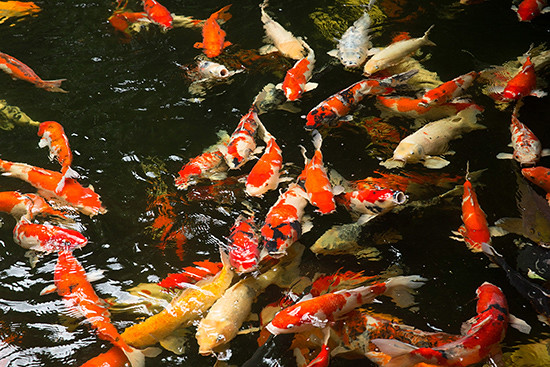Common Carp
Cyprinus carpio
The carp is a large, sturdy fish with thick scales. Native to Europe, the carp was introduced to the Chesapeake region in the late 1800s and can now be found throughout the rivers, lakes and ponds of the watershed.
This section shows one large critter image at a time. Use the thumbnails that follow to select a specific image to display here.

This gallery contains a grid of small thumbnails. Selecting a thumbnail will change the main image in the preceding section.
Appearance
Carp are broad, large-bodied fish with a long dorsal fin that extends along most of its back and a forked tail fin. Carp typically grow 1 to 2 feet in length and weigh 1 to 8 pounds, although it is not uncommon for them to reach 30 to 40 pounds. Adult carp have a mouth located at the end of the face, while young carp have a mouth slightly under the pointed part of the face.
Two barbels (whiskerlike sensory organs) appear at the corners of the mouth. Males and females look very similar, except males have a slightly larger ventral fin. A typical carp is olive-brown to reddish-brown with a yellow belly; coloring may be variable, but its scales are always large and thick.
Feeding
Carp are omnivorous but feed primarily on plants. Adult carp feed on a variety of organisms including aquatic plants and seeds, insects, crustaceans, mollusks and fish eggs. Carp feed by sucking up mud from the bottom, spitting it back out and feeding on particles while they are suspended. Feeding areas favored by carp are easily recognized as depressions in the sediment.
Predators
Predators of young carp include larger fish like northern pike, walleye and largemouth bass. Birds such as great blue herons also feed on young carp. Humans are the primary predators of adult carp.
Reproduction and life cycle
Spawning generally occurs in the spring and early summer. The female deposits her eggs onto underwater vegetation, where they adhere in clumps. A typical female may produce up to 300,000 eggs over the breeding season. Eggs take roughly four days to hatch. Carp live an average of 17 to 20 years, but some carp have been known to live up to 47 years in captivity.
Did you know?
- Carp are an important food fish throughout most of the world, except in Australia and North America, where the fish is considered unpalatable.
- The carp’s method of feeding has been known to decrease water quality. As a bottom-feeder, the carp roots along the floor of a body of water, sucking in mud and other matter off the bottom and spitting it back out again. This clouds the water, reducing the ability of predator fish to see their prey and decreasing the amount of sunlight that reaches underwater plants.
- Common carp were introduced to the United States during the mid-1800s after the U.S. Commission of Fish and Fisheries began an intensive effort of carp cultivation. The fish’s ability to live and reproduce in a variety of water conditions allowed it to quickly invade other waterways.
- Although sometimes confused for goldfish, koi are actually a variety of domesticated common carp that are often kept for decorative purposes in ponds or water gardens.
Sources and additional information
- Fishes of Chesapeake Bay by Edward O. Murdy, Ray S. Birdsong and John A. Musick
- Maryland Fish Facts: Common Carp – Maryland Department of Natural Resources
- Cyprinus carpio – National Exotic Marine and Estuarine Species Information System
- Animal Diversity Web: Cyprinus carpio – University of Michigan Museum of Zoology
- History of Common Carp in North America – National Park Service Mississippi National River & Recreation Area
